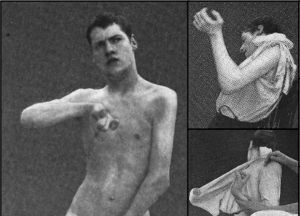

MedFriendly®


Athetosis
Athetosis is a condition in which movements are
involuntary, slow, squirming, and continuous. These
movements occur during flexing, extending (the
opposite of flexing), supination (turning the palm up),
and pronation (turning the palm down) of the hands and
fingers. There may also be difficulty moving the toes,
feet, arms, legs, face, or neck. Athetosis is usually
seen in the following conditions/situations: damage to
the basal ganglia (an area on the bottom of the brain
that controls movement), tabes dorsalis (a type of
disease affecting the spinal cord), cerebral palsy (a
type of brain damage causing impairments in muscle
power and coordination), and other movement
disorders such as Huntington’s disease.
FEATURED BOOK: Huntington's Disease: Tips for Caregivers
Huntington's disease is a motor disorder that results in athetosis, chorea, and
deterioration of mental functioning. Chorea is involuntary, irregular, dance-like
movements of the arms, legs, and face. Huntington’s disease is one of the conditions that
most often results in athetosis (and chorea). Movements characterized by athetosis are
known as athetoid movements. Treatments for athetosis are not particularly effective.
Medications have limited effectiveness and brain surgery produced short-term
improvement but usually not long-term benefit. Athetosis comes from the Greek word
"athetos" which meaning "unfixed," and the Greek word "osis" meaning "condition." Put
the two words together and you get "unfixed condition."
"Where Medical Information is Easy to Understand"™

A person with athetosis.














